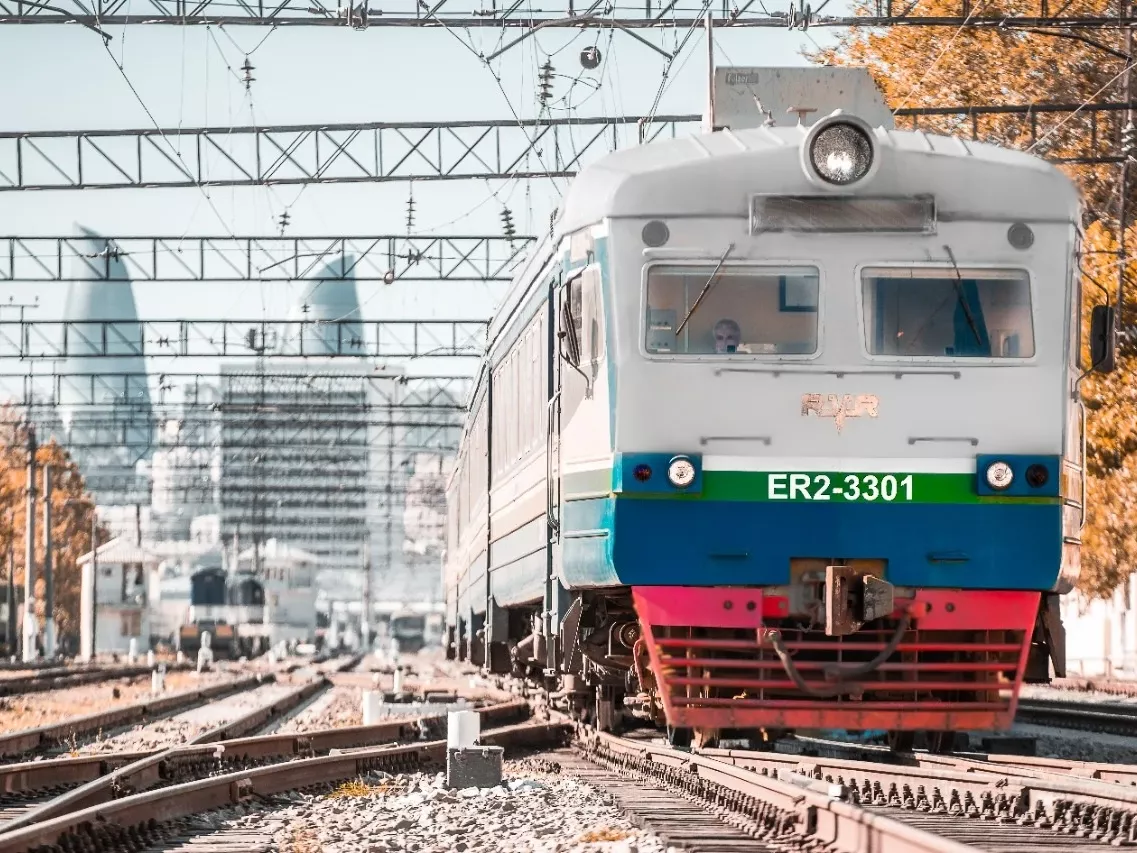
In the wake of the Ukraine conflict, traditional Eurasian transit routes, primarily those passing through Russia, have encountered significant disruptions. This geopolitical shift underscores the closure of the northern corridor due to the ongoing conflict, emphasizing the need to reassess regional transport strategies. Historically, these routes have been pivotal for linking China, Russia, and Europe; however, the conflict has necessitated the exploration of viable alternatives.
Amidst these shifts, Türkiye has played a multifaceted role in the Ukraine war, balancing its relations with both Russia and Ukraine. This balancing act has allowed Türkiye to maintain its strategic interests while positioning itself as a key mediator in the conflict. Türkiye’s Middle Corridor, also known as the Trans-Caspian International Transport Route (TITR), emerges as a crucial alternative in this context. Spanning from Türkiye to China via Georgia, Azerbaijan, the Caspian Sea, and Central Asian nations like Kazakhstan or Turkmenistan, Uzbekistan, and Kyrgyzstan, this route promises a seamless connection across Asia to Europe, redefining Eurasian logistics and strategic partnerships.[1]
Challenges of the India-Middle East-Europe Corridor (IMEC)
Turning our attention to the India-Middle East-Europe Economic Corridor (IMEC), it is crucial to examine how its exclusion of Türkiye poses significant logistical and economic challenges.
The India-Middle East-Europe Economic Corridor (IMEC) is envisioned as a key initiative to enhance connectivity between India, the Middle East, and Europe. However, excluding Türkiye from this corridor has introduced a number of significant logistical and economic challenges that could impede its success.
Firstly, Türkiye is promoting an alternate route, known as the Iraq Development Road, which aims to connect the Iraqi port of Faw directly to Türkiye and then onwards to Europe. This initiative could potentially divert attention and resources away from IMEC, threatening its prominence and reducing its overall effectiveness. The competition between these corridors might lead to fragmentation, which could result in inefficiencies across the regional trade and transport networks.[2]
From a logistical perspective, the route proposed for IMEC involves several complex elements, including multiple transshipments and numerous border crossings. This complexity not only increases the logistical challenges but also escalates the associated costs. In contrast, Türkiye offers a more direct and well-established route, and its exclusion means that IMEC may miss out on leveraging Türkiye’s advanced logistics and transport infrastructure.
Regarding infrastructure, IMEC requires substantial investments to build out necessary railways, ports, and pipelines. The absence of Türkiye's well-developed infrastructure in this equation could lead to increased costs and extended timelines for project completion.[3]
Economically, relying on a corridor that utilizes multiple modes of transport—sea, rail, and road—and demands extensive infrastructure development is likely to incur higher costs compared to more direct routes, such as those through Türkiye. Moreover, excluding Türkiye could result in trade diversion, with goods potentially routed along longer and more expensive paths, thereby diluting the economic benefits expected from the corridor.
Security and stability are also major concerns. The IMEC passes through several regions marked by conflicts and ongoing security issues, such as areas within Israel and the broader Middle East. The exclusion of Türkiye, which could offer a relatively stable and secure transit route, may expose IMEC to greater security risks. Additionally, the corridor's route through politically unstable areas could heighten its vulnerability to terrorist attacks and other security threats, complicating its operation and implementation.[4]
Lastly, the successful implementation of IMEC hinges on effective coordination among the participating countries. Excluding Türkiye, a significant regional player with experience in managing international corridors, could introduce diplomatic challenges and complicate collaborative efforts. Furthermore, harmonizing regulations, tariffs, and customs procedures across multiple countries is already a complex task. The absence of Türkiye, with its established expertise in such matters, could render this process even more arduous.
Strategic Significance of the Middle Corridor
In contrast to the strategic leverage offered by the Middle Corridor, the IMEC's exclusion of Türkiye introduces complexities and inefficiencies that could undermine its effectiveness and economic rationale.
The Middle Corridor, also known as the Trans-Caspian International Transport Route (TITR), has exhibited impressive growth in its operational metrics. In 2022, the corridor's container traffic was estimated to grow significantly, reaching around 50,000 twenty-foot equivalent units (TEUs), demonstrating a robust increase in freight activity. The volume of cargo transported through this corridor followed a similar upward trajectory, with figures doubling to 1.7 million tonnes in 2022 and further increasing by 65% to approximately 2.7 million tonnes in 2023. Predictions by the Kazakh Ministry of Energy suggest that these volumes are expected to continue rising sharply, reaching 6.5 million tonnes within the year, with a forecast of 7.5 million tonnes in 2024, and potentially soaring to 15 million tonnes by 2025.[5]
These burgeoning figures underscore the corridor's expanding role in Eurasian trade. Such growth necessitates substantial investment to streamline and expand infrastructure to meet rising demand. The European Bank for Reconstruction and Development has estimated that addressing these needs could require investments ranging from $19 to $21 billion. These funds would be directed towards mitigating bottlenecks and enhancing overall route efficacy, with the goal of potentially tripling trade volumes and halving travel times by 2030. Reflecting this investment potential, Middle Corridor countries have already earmarked approximately 6 billion euros for infrastructure projects over the next five years.[6]
Significant infrastructural enhancements, including the completion of the Baku-Tbilisi-Kars (BTK) railway and the Marmaray tunnel in Istanbul, have substantially bolstered the corridor’s capacity. These projects, along with the introduction of new vessels across the Caspian Sea and upgrades at the Port of Aktau and the new oil port terminal at Kuryk Port, are critical components in this extensive network, enhancing both the operational capacity and strategic flexibility of the Middle Corridor.[7]
On the trade and connectivity front, the Middle Corridor has seen a significant uptick in activity. From January to August 2023, freight volumes from China to Europe along this route surged by 84% compared to the same period in 2022, surpassing 1.6 million tonnes. Container traffic through the TITR grew by 33% year-on-year in 2022. Additionally, a joint logistics company was established by Azerbaijan, Kazakhstan, and Georgia, aimed at reducing operational delays and streamlining the tariff process along the corridor, further enhancing its efficiency and reliability.[8]
These developments are not just numerical indicators but reflect a broader geopolitical shift. The Middle Corridor is rapidly gaining attention as a vital alternative to the Northern Corridor, driven by the need for resilient and diversified trade routes. The corridor’s strategic and economic benefits are expected to catalyze regional trade, create employment opportunities, and spur entrepreneurship, contributing substantially to local and regional economies.[9]
These infrastructure projects underscore the corridor’s readiness and strategic intent, positioning the Middle Corridor as a pivotal link in Eurasian trade logistics, capable of accommodating a significant increase in trade volumes and reducing transit times This infrastructure not only enhances Türkiye's role in global trade but also solidifies its position as a central energy and transportation hub between two continents.
Türkiye's strategic importance has grown significantly during the Ukraine conflict context, both as a mediator in the conflict and as a central player in the Middle Corridor initiative. By leveraging its geographical position and investing in critical infrastructure, Türkiye is poised to enhance its role in regional and global trade, while also navigating the complex geopolitical landscape of Eurasia. The Middle Corridor offers numerous opportunities, including enhanced trade between China and Europe. By providing a shorter and faster route, it boosts economic activity and fosters integration across the region. Moreover, the initiative promotes regional cooperation among the transit countries, which can lead to greater political and economic stability. Türkiye’s strategic positioning through the Middle Corridor enhances its importance as a key player in Eurasian trade and geopolitics, highlighting its role not just as a gateway but as a pivotal linchpin in the connectivity between Asia and Europe.[10]
Furthermore, Türkiye’s strategic initiative to develop an alternate maritime route via Iraq, in response to attempts to bypass it through other regional connections, highlights its proactive stance in safeguarding national interests and regional influence. This development is not merely an infrastructural achievement; it is a strategic maneuver in the broader geopolitical chessboard, where Türkiye aims to maintain and enhance its sovereign capabilities in the face of evolving regional dynamics.[11]
Türkiye's response to these new challenges is a testament to its resilience and strategic foresight. The Middle Corridor not only offers a lifeline for Eurasian trade but also symbolizes Türkiye's growing influence and pivotal role in bridging Asia and Europe. As the Eurasian landscape evolves, the significance of Türkiye's geographical and geopolitical position only grows, marking it as a central player in the global arena, making it a transport hub as well next to being an energy transit hub.
*Picture: Eurasian.net
[1] Tuba Eldem, “Russia’s War on Ukraine and the Rise of the Middle Corridor as a Third Vector of Eurasian Connectivity,” Stiftung Wissenschaft und Politik (SWP) 2022, no. C 64 (October 28, 2022): 7, https://doi.org/10.18449/2022C64; Fatih Ceylan, “All Roads Now Leading to the Middle Corridor,” Panorama (blog), February 14, 2024, https://www.uikpanorama.com/blog/2024/02/14/middle-corridor/; “Türkiye’s Multilateral Transportation Policy / Republic of Türkiye Ministry of Foreign Affairs” (Republic of Türkiye Ministry of Foreign Afairs), accessed May 27, 2024, https://www.mfa.gov.tr/turkiye_s-multilateral-transportation-policy.en.mfa.
[2] The New Arab Staff, “Turkey’s Erdogan Slams India-Gulf-Israel Transport Corridor,” Https://Www.Newarab.Com/, September 12, 2023, sec. Analysis, https://www.newarab.com/news/turkeys-erdogan-slams-india-gulf-israel-transport-corridor; Alex Blair, “Turkey Moves against Europe with Trade Corridor Alternative to IPEC,” Railway Technology (blog), September 20, 2023, https://www.railway-technology.com/news/turkey-alternative-india-middle-east-trade-corridor-plan/.
[3] Shaul Chorev, “The India-Middle East-Europe Economic Corridor: Promises and Challenges,” Australian Institute of International Affairs, October 25, 2023, sec. Analysis, https://www.internationalaffairs.org.au/australianoutlook/the-india-middle-east-europe-economic-corridor-promises-and-challenges/.
[4] Arthur, “India-Middle East Corridor in Doubt Due to Israel-Hamas War,” Deutsche Welle, February 27, 2024, sec. Business-India, https://www.dw.com/en/india-middle-east-corridor-in-doubt-due-to-israel-hamas-war/a-68354312.
[5] “Trans-Caspian International Transport Route: Container Traffic 2022” (Statista Research Department, March 28, 2024), https://www.statista.com/statistics/1390628/trans-caspian-international-traffic-route-container-volume/; Haley Nelson, “The Middle Corridor Infrastructure Deals and Developments: 2023 in Review,” Caspian Policy Center, December 21, 2023, https://www.caspianpolicy.org/research/economy/the-middle-corridor-infrastructure-deals-and-developments-2023-in-review.
[6] Nelson, “CPC | The Middle Corridor Infrastructure Deals and Developments”; Aibarshyn Akmetkali, “World Bank Estimates Tripling Trade Volumes on Middle Corridor by 2030 - The Astana Times,” The Astana Times, November 28, 2023, sec. Business, https://astanatimes.com/2023/11/world-bank-estimates-tripling-trade-volumes-on-middle-corridor-by-2030/; “Middle Corridor* through Central Asia, Caucasus Can Boost Trade, Connectivity and Supply Chain Resilience, Says New Report” (World Bank, Washington, DC), 2024/ECA/043, accessed May 27, 2024, https://www.worldbank.org/en/news/press-release/2023/11/27/middle-corridor-through-central-asia-caucasus-can-boost-trade-connectivity-and-supply-chain-resilience; “Middle Corridor* through Central Asia, Caucasus Can Boost Trade, Connectivity and Supply Chain Resilience, Says New Report.”
[7] Seymur Mammadov, “The Middle Corridor Set to Halve Cargo Transit Time between Asia and Europe,” Bne IntelliNews, February 1, 2024, https://www.intellinews.com/the-middle-corridor-set-to-halve-cargo-transit-time-between-asia-and-europe-310368/; Nelson, “CPC | The Middle Corridor Infrastructure Deals and Developments.”
[8] “Analysis and Prospects for the Trans-Caspian International Transport Route,” Eurasian Rail Alliance Index, October 4, 2023, sec. Analytics, https://index1520.com/en/analytics/analiz-i-perspektivy-transkaspiyskogo-mezhdunarodnogo-transportnogo-marshruta/; Tatiana Rey-Bellet, “The New Corridors of Global Trade | UNCTAD” (United Naions Trade & Development, March 27, 2024), https://unctad.org/news/new-corridors-global-trade.
[9] Yunis Sharifli, “Emerging Potential of the Middle Corridor,” Anadolu Agency, April 5, 2022, sec. Analysis, https://www.aa.com.tr/en/analysis/analysis-emerging-potential-of-the-middle-corridor/2579415.
[10] OECD, Realising the Potential of the Middle Corridor (OECD, 2023), https://doi.org/10.1787/635ad854-en.
[11] OECD.
© 2009-2025 Center for Eurasian Studies (AVİM) All Rights Reserved
No comments yet.
-
 TÜRKİYE’S CONSTRUCTIVE VISION, EU’S DIVISIVE DIPLOMACY IN BLACK SEA AND CENTRAL ASIA
TÜRKİYE’S CONSTRUCTIVE VISION, EU’S DIVISIVE DIPLOMACY IN BLACK SEA AND CENTRAL ASIA
Teoman Ertuğrul TULUN 21.04.2025 -
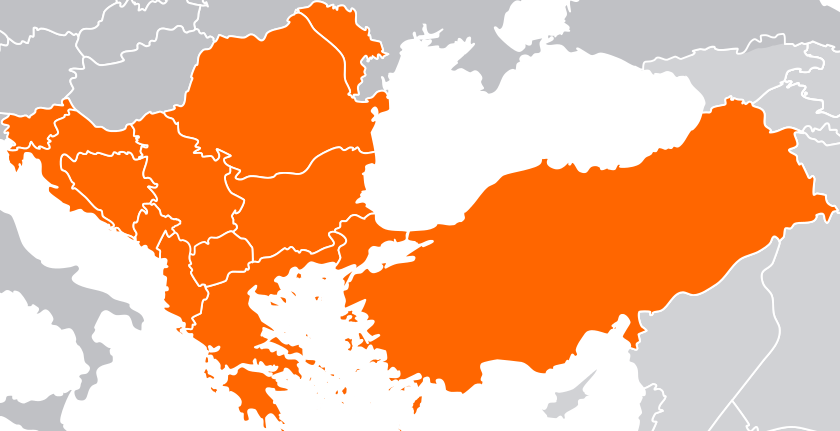 BALKANS 2016: INTEGRATION EFFORTS IN A TIME OF UNCERTAINITY
BALKANS 2016: INTEGRATION EFFORTS IN A TIME OF UNCERTAINITY
Teoman Ertuğrul TULUN 09.01.2017 -
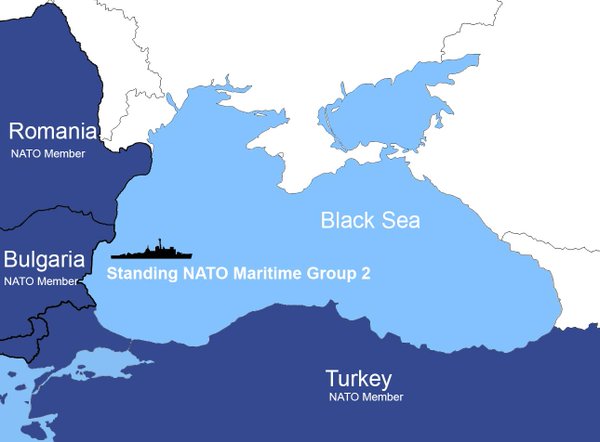 BLACK SEA, A POTENTIAL FRICTION VENUE BETWEEN RUSSIA AND THE WEST: TURKEY HOLDS THE KEY TO THE REGION
BLACK SEA, A POTENTIAL FRICTION VENUE BETWEEN RUSSIA AND THE WEST: TURKEY HOLDS THE KEY TO THE REGION
Teoman Ertuğrul TULUN 13.03.2017 -
 COVID-19 AND CORONA BONDS HAVE UNMASKED THE FRAGILITY OF THE EU
COVID-19 AND CORONA BONDS HAVE UNMASKED THE FRAGILITY OF THE EU
Teoman Ertuğrul TULUN 22.04.2020 -
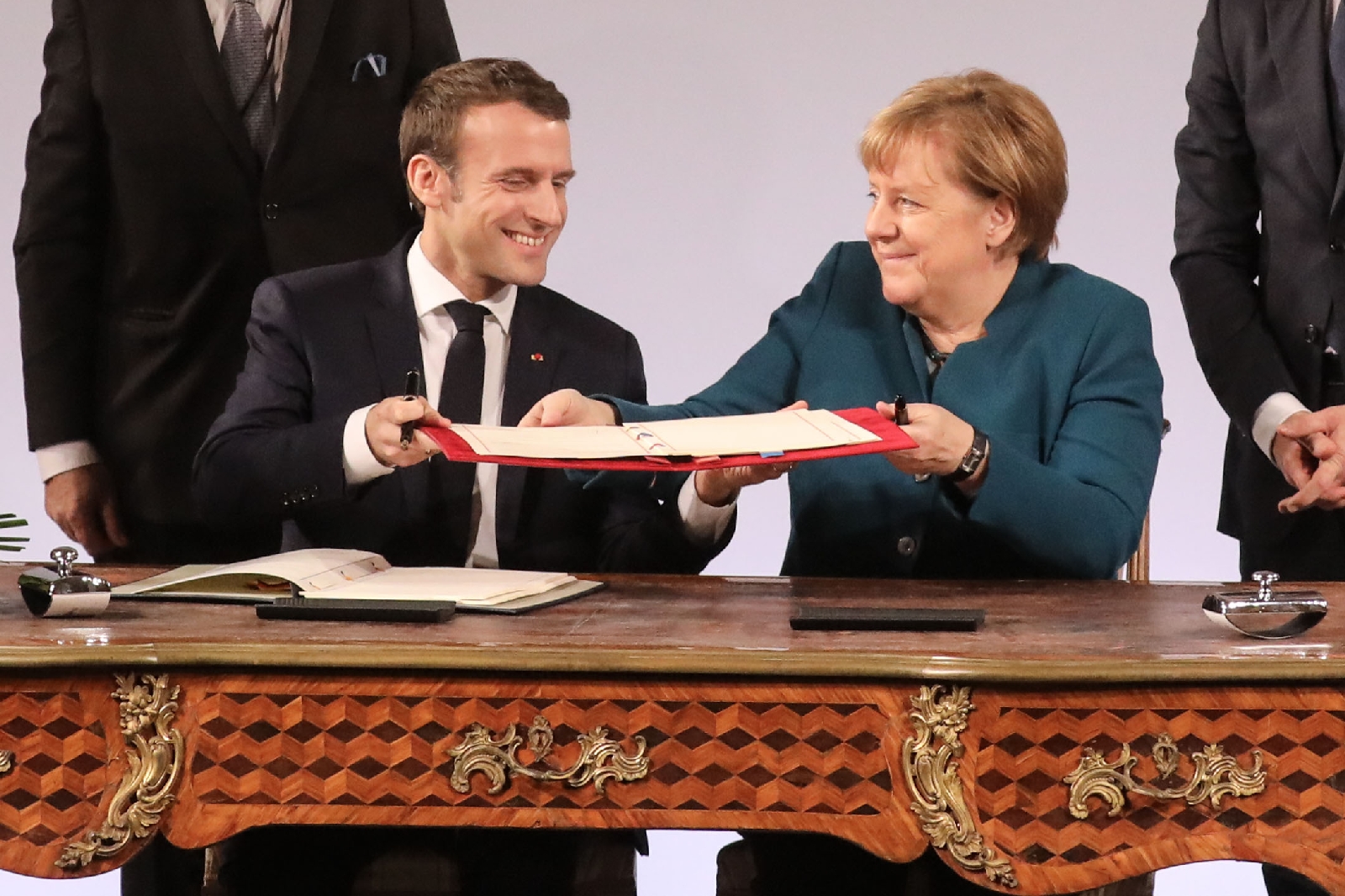 GERMAN-FRENCH JOINT CULTURAL INSTITUTES: TRANSFORMATION OF THE “CIVILIZING” MISSION OF WEST EUROPEAN COLONIALISM
GERMAN-FRENCH JOINT CULTURAL INSTITUTES: TRANSFORMATION OF THE “CIVILIZING” MISSION OF WEST EUROPEAN COLONIALISM
Teoman Ertuğrul TULUN 26.02.2019
-
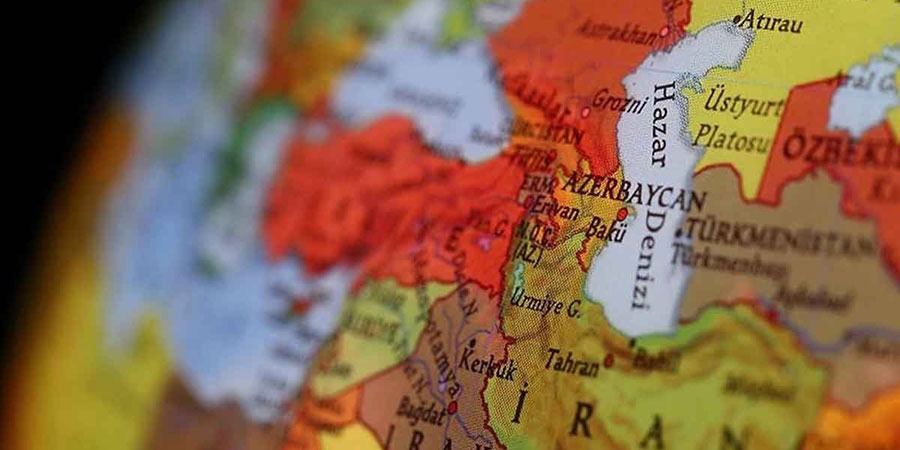 OPPORTUNITIES FOR THE EAST-WEST CONNECTION OVER THE CASPIAN SEA
OPPORTUNITIES FOR THE EAST-WEST CONNECTION OVER THE CASPIAN SEA
Gülperi GÜNGÖR 29.04.2021 -
 EU'S FAILURE TO FULFILL ITS HUMAN RIGHTS RESPONSIBILITIES: STATEMENT BY THE EU SPECIAL REPRESENTATIVE FOR HUMAN RIGHTS AT THE UN
EU'S FAILURE TO FULFILL ITS HUMAN RIGHTS RESPONSIBILITIES: STATEMENT BY THE EU SPECIAL REPRESENTATIVE FOR HUMAN RIGHTS AT THE UN
Teoman Ertuğrul TULUN 18.10.2022 -
 REMEMBERING AND REMINDING THE SIGNIFICANCE, MEANING, AND PROVISIONS OF THE LAUSANNE PEACE TREATY IN ITS CENTENARY
REMEMBERING AND REMINDING THE SIGNIFICANCE, MEANING, AND PROVISIONS OF THE LAUSANNE PEACE TREATY IN ITS CENTENARY
Teoman Ertuğrul TULUN 11.05.2023 -
 TURKISH-AMERICAN RELATIONS LOST A HISTORICAL OPPORTUNITY
TURKISH-AMERICAN RELATIONS LOST A HISTORICAL OPPORTUNITY
Hazel ÇAĞAN ELBİR 17.11.2022 -
 PATRICK DEVEDJIAN: A NEO-FASCIST WHO WAS A LIFE-LONG SUPPORTER OF TERRORISM
PATRICK DEVEDJIAN: A NEO-FASCIST WHO WAS A LIFE-LONG SUPPORTER OF TERRORISM
Maxime GAUIN 02.04.2020
-
25.01.2016
THE ARMENIAN QUESTION - BASIC KNOWLEDGE AND DOCUMENTATION -
12.06.2024
THE TRUTH WILL OUT -
27.03.2023
RADİKAL ERMENİ UNSURLARCA GERÇEKLEŞTİRİLEN MEZALİMLER VE VANDALİZM -
17.03.2023
PATRIOTISM PERVERTED -
23.02.2023
MEN ARE LIKE THAT -
03.02.2023
BAKÜ-TİFLİS-CEYHAN BORU HATTININ YAŞANAN TARİHİ -
16.12.2022
INTERNATIONAL SCHOLARS ON THE EVENTS OF 1915 -
07.12.2022
FAKE PHOTOS AND THE ARMENIAN PROPAGANDA -
07.12.2022
ERMENİ PROPAGANDASI VE SAHTE RESİMLER -
01.01.2022
A Letter From Japan - Strategically Mum: The Silence of the Armenians -
01.01.2022
Japonya'dan Bir Mektup - Stratejik Suskunluk: Ermenilerin Sessizliği -
03.06.2020
Anastas Mikoyan: Confessions of an Armenian Bolshevik -
08.04.2020
Sovyet Sonrası Ukrayna’da Devlet, Toplum ve Siyaset - Değişen Dinamikler, Dönüşen Kimlikler -
12.06.2018
Ermeni Sorunuyla İlgili İngiliz Belgeleri (1912-1923) - British Documents on Armenian Question (1912-1923) -
02.12.2016
Turkish-Russian Academics: A Historical Study on the Caucasus -
01.07.2016
Gürcistan'daki Müslüman Topluluklar: Azınlık Hakları, Kimlik, Siyaset -
10.03.2016
Armenian Diaspora: Diaspora, State and the Imagination of the Republic of Armenia -
24.01.2016
ERMENİ SORUNU - TEMEL BİLGİ VE BELGELER (2. BASKI)
-
AVİM Conference Hall 24.01.2023
CONFERENCE TITLED “HUNGARY’S PERSPECTIVES ON THE TURKIC WORLD"









